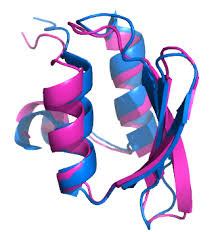A late coupling for himastatin
Himastatin is a bacterial natural product that has been studied over the past several decades for its antibiotic properties and intriguing structure. The compound is a dimer of peptide macrocycles linked through a bond between the aryl rings of two cyclotryptophan residues. D’Angelo et al. report a comparatively efficient synthesis of himastatin as well as its unnatural enantiomer and several other derivatives (see the Perspective by Smith). The key step is a late-stage dimerization relying on oxidation of the monomers by a copper salt. Fluorescent tagging sheds light on the compound’s cell membrane–disrupting mechanism of action. —JSY
Abstract
The natural product himastatin has an unusual homodimeric structure that presents a substantial synthetic challenge. We report the concise total synthesis of himastatin from readily accessible precursors, incorporating a final-stage dimerization strategy that was inspired by a detailed consideration of the compound’s biogenesis. Combining this approach with a modular synthesis enabled expedient access to more than a dozen designed derivatives of himastatin, including synthetic probes that provide insight into its antibiotic activity.







